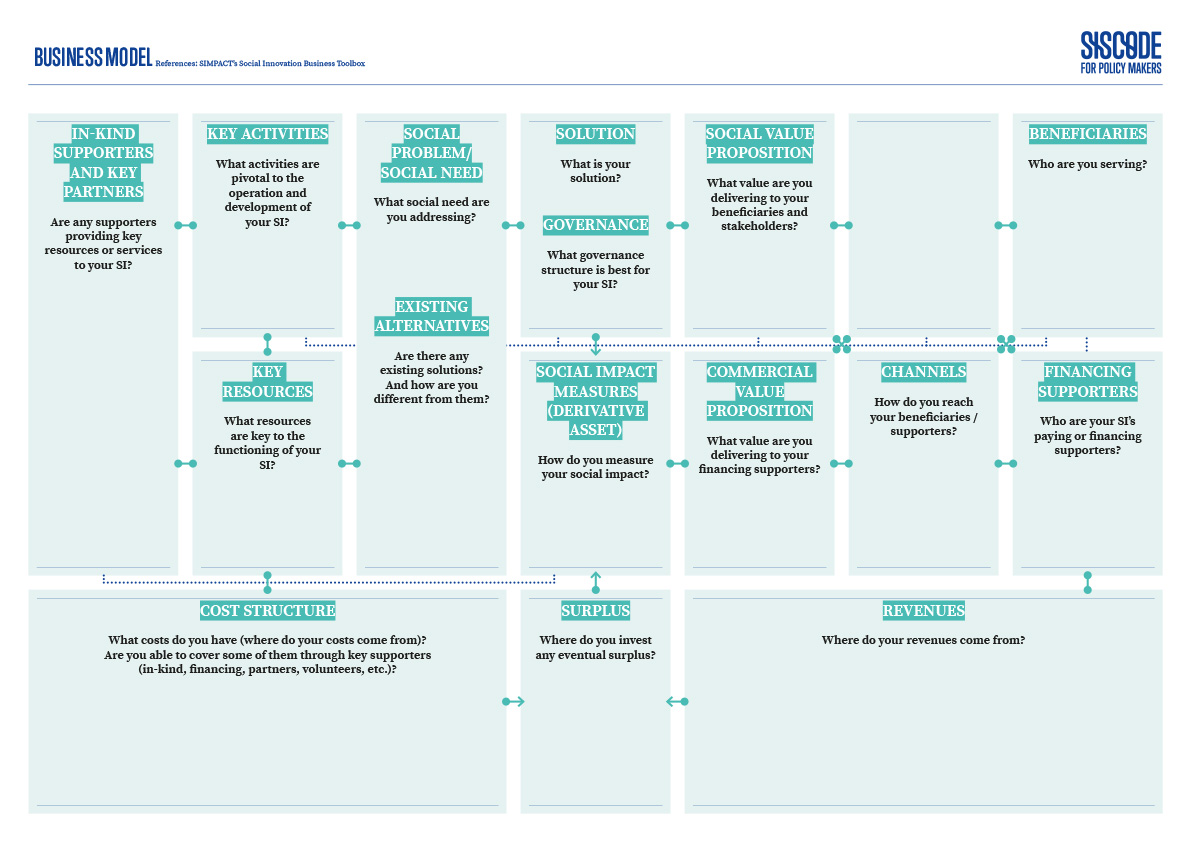Complexity: Medium
Time required: 2 hours
Material required: pen
References: SIMPACT’s Social Innovation Business Toolbox, www.simpact-project.eu
What is it for?
Fleshing out the business model of your idea in a canvas is a key aspect in furthering the design of the concept by providing the big picture on the processes that go on to ensure that value is created, delivered and captured. The tool is a precursor to drawing up a complete business plan and is useful for formulating in a more rapid and cost-efficient manner the business model behind the idea for the initial phases.
How to use it?
The social innovation business model canvas is made up of 15 blocks. Unlike other similar business model canvases, this one has been modified to better suit social innovations, including among others, the following changes: a specific social value proposition, a separation between beneficiaries and financing supporters and boxes dedicated to surplus designation and social impact measurement. The canvas can be completed in any order; the following is merely a suggested path.
- Social Problem/Social Need and Existing Alternatives: identify and analyze the social problem at hand and benchmark existing solutions to find out what is and what is not working.
- Beneficiaries and Financing Supporters: identify, segment and understand your beneficiaries, customers and financing supporters (donors, investors and funders).
- Solution/Governance: ideate or describe the solution to the social problem/need and the governance model.
- Social/Commercial Value Proposition: formulate the social (i.e. the value created for beneficiaries) and commercial value proposition (i.e. the value created for paying customers/investors).
- Relationship and Channels: describe how you reach your target beneficiaries, customers and/or investors.
- Social Impact Measures: what indicators can be used to measure the impact of the solution.
- Key Activities/Key Resources: define what key activities and resources are needed to support the innovation.
- In-kind Supporters and Key Partners: list key partners who provide support, resources and services that foster the growth of the solution.
- Cost Structure & Revenue Streams: list what costs are created and how revenues will be generated (i.e. memberships fees, freemium/premium, product sales, etc.).
- Surplus: indicate where surplus will be invested if generated.


